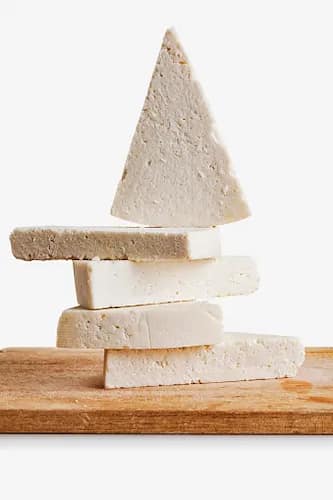Cotija cheese originated in the Mexican state of Michoacán, in the town of Cotija de la Paz. Cotija is unlike any other cheese, though it has been compared to feta, ricotta salata, and Parmesan. Cotija comes in two varieties: younger, fresher cheese and aged cheese.
The younger cotija ages for about 100 days and is most similar to feta in texture, colour, and flavour, though it lacks feta's sharp tang. Cotija cheese, when aged, develops the salty, sharper characteristics of Parmesan and Romano cheeses. It crumbles easily when young and grates better as it ages. Cotija does not melt like other cheeses, making it an excellent choice for topping a hot dish. It costs the same as feta and ricotta salata.
How To Use Cotija Cheese?
Elote and esquites, which combine grilled corn with lime-tinged crema and finely grated cotija, are two of the most popular dishes that use cotija cheese. Some recipes call for cotija cheese or queso fresco, a milder and softer Mexican cheese than cotija. Cotija has more body and a stronger bite, so it stands up better to the chile powder and corn sweetness.
This is just one of the many applications for cotija. This cow's milk cheese can be served with almost any dish, but it goes best with spicy tomato or chile-based dishes and citrus-laden dishes. When finely grated, it has an adhesive quality that works well when you want the cheese to cling to foods. It looks and tastes good on top of black bean soup, chicken mole, Mexican street tacos, and nachos, among other things.
Cooking With Cotija
The majority of cheeses melt when heated, but not cotija. This makes it an excellent ingredient to use when the colour and shape of the cheese must remain consistent, such as when topping a hot dish. Even if you aren't creating Mexican cuisine, cotija cheese is still worth trying on its own. It is usually used as a garnish.
Cotija is a great cheese for salads and can be mixed into meatballs, veggie burgers, and other dishes where feta is the main dairy ingredient. Cotija cheese can be eaten on its own or as part of a charcuterie board.
Taste Of Cotija
Cotija cheese has a flavour that is similar to feta cheese: bold, tangy, and salty. Younger cotija can be crumbled or chopped into a dish to add a distinct flavour, whereas aged cotija is better for grating. It's not a soft cheese. It has a heartier, fluffier texture with some chew to it.

Difference Between Cotija And Queso Cheese
These two Mexican cheeses are frequently used interchangeably in recipes, though queso fresco does not have the same deep tang as cotija cheese. Both are made from cow's milk and have a nice crumble, making them ideal as a condiment or tasty garnish.
The main difference between these two types of cheese is their age. Cotija cheese takes three months to a year to mature, whereas queso fresco, which translates as "fresh cheese," is ready to eat almost immediately. These are the most common Mexican cheeses found in grocery stores around the world.
How To Store Cotija?
Refrigerate cotija cheese in an airtight container until ready to use. Cotija is frequently sold in pre-grated packets with a resealable top. If not, place the cheese in a completely sealed bag or container.
The cheese should keep for about a month, depending on how long it has been aged. Cotija that has been aged may last even longer. If the cheese has mould or an off-odour, it should be discarded.


